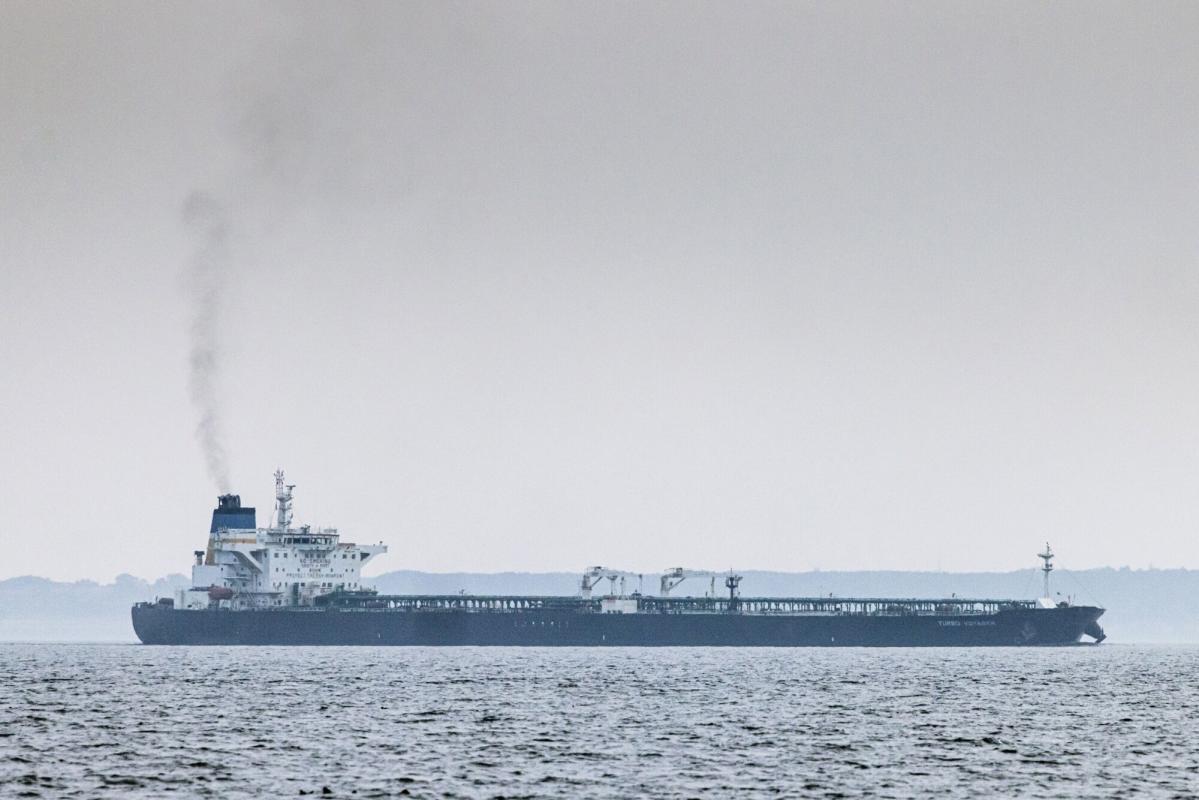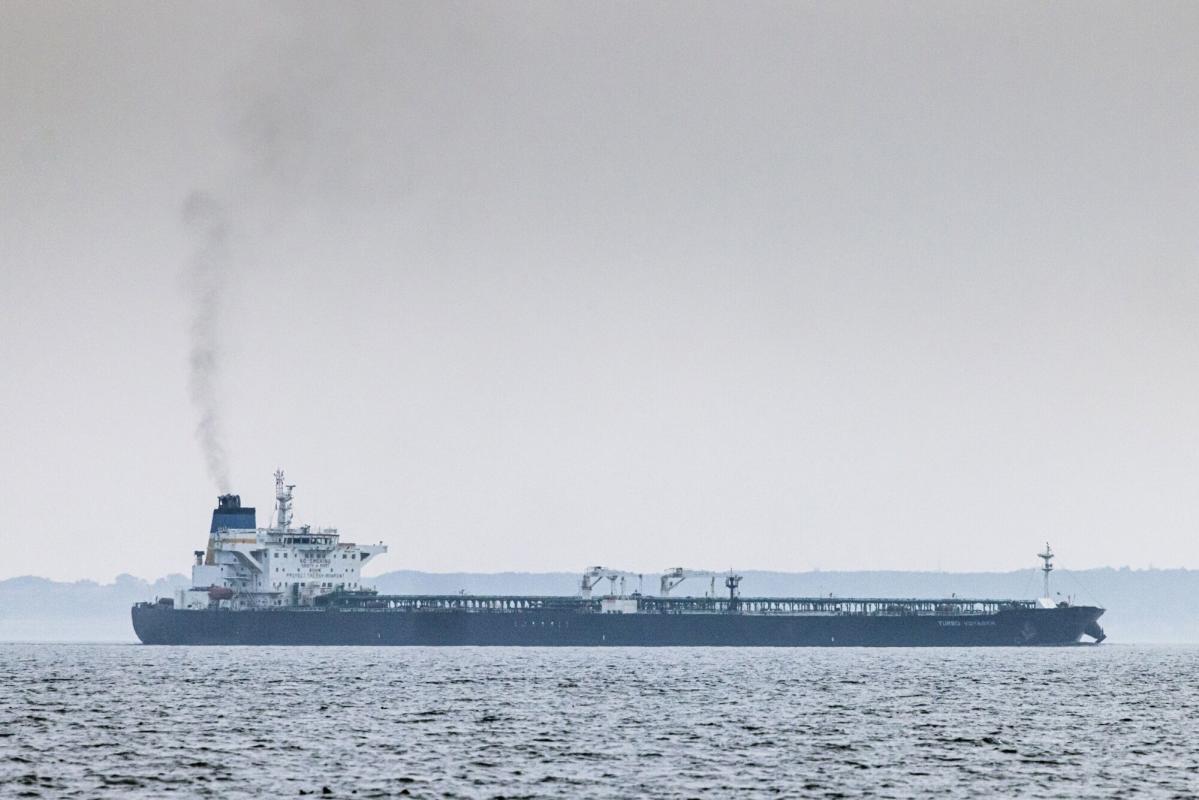
(Bloomberg) — Plunging oil prices helped drive Russia’s revenues from crude sales to the lowest since February, highlighting the challenges Moscow faces from a weakening global market.
Most Read from Bloomberg
The price slump sent Russia’s flagship Urals crude back down toward the $60-a-barrel threshold that the Group of Seven sought to impose on the Kremlin as punishment for the Ukraine invasion. The grade from Russia’s Baltic ports traded at an average $60.12 on Friday, Argus Media data showed.
Four-week average crude volumes slipped to 3.13 million barrels a day in the week, down by 30,000 barrels a day compared with the previous period. Weekly flows, which are far more volatile, moved in the opposite direction, edging up by about 40,000 barrels a day.
The decline in global prices prompted several OPEC+ member countries, including Russia, to postpone until December the easing of output curbs that had been planned to start in October. The delay means that Moscow will actually have to cut production in October and November to make up for pumping above its OPEC+ target earlier this year, rather than being able to offset the compensation cuts against a rising target.
Crude Shipments
A total of 29 tankers loaded 21.99 million barrels of Russian crude in the week to Sept. 8, vessel-tracking data and port-agent reports show. The volume was up from 21.67 million barrels on 29 ships the previous week.
It means Russia’s seaborne daily crude flows in the week to Sept. 8 rose by about 40,000 barrels to 3.14 million.
The less volatile four-week average moved in the opposite direction, falling by 30,000 barrels a day to 3.13 million from 3.16 million the previous week. Apart from one week when they dipped below 3 million barrels a day, shipments using this measure have ranged between 3.13 million and 3.25 million barrels a day since the beginning of July.
Crude shipments so far this year are about 45,000 barrels a day below the average for the whole of 2023.
One cargo of Kazakhstan’s KEBCO crude was loaded at Novorossiysk and one at Ust-Luga during the week.
Russia terminated its export targets at the end of May, opting instead to restrict production, in line with its partners in the OPEC+ oil producers’ group. The country’s output target is set at 8.978 million barrels a day until the end of November, after a planned easing of some output cuts was delayed by two months.
Moscow has also pledged to make deeper output cuts in October and November this year, then between March and September of 2025, to compensate for pumping above its OPEC+ quota earlier this year.
Russian data show the nation got very close to meeting its OPEC+ crude-output target last month, following a push from the group to improve adherence to its supply deal.
Export Value
The gross value of Russia’s crude exports fell to $1.44 billion in the seven days to Sept. 8, from $1.52 billion in the period to Sept. 1. The small increase in weekly flows was more than offset by a slump in prices for Russia’s major crude streams. That took the weekly value of overseas shipments to its lowest since January.
Export values at Baltic ports were down week-on-week by about $6.30 a barrel, while shipments from the Black Sea fell by about $5.90 a barrel. Prices for key Pacific grade ESPO held up better, losing about $2.70 compared with the previous week. Delivered prices in India were also down, falling by about $5.90 a barrel, all according to numbers from Argus Media.
Four-week average income fell to its lowest since February at about $1.51 billion a week. The four-week average peak of $2.17 billion a week was reached in the period to June 19, 2022.
During the first four weeks after the Group of Seven nations’ price cap on Russian crude exports came into effect in early December 2022, the value of seaborne flows fell to a low of $930 million a week, but soon recovered.
Flows by Destination
-
Asia
Most Read from Bloomberg
Observed shipments to Russia’s Asian customers, including those showing no final destination, fell to 2.92 million barrels a day in the four weeks to Sept. 8. That’s about 10% below the average level seen in April.
About 1.25 million barrels a day of crude was loaded onto tankers heading to China. The Asian nation’s seaborne imports are boosted by about 800,000 barrels a day of crude delivered from Russia by pipeline, either directly, or via Kazakhstan.
Flows on ships signaling destinations in India averaged 1.62 million barrels a day, down from a revised 1.68 million for the period to Sept. 1.
Both the Chinese and Indian figures are likely to rise as the discharge ports become clear for vessels that are not currently showing final destinations.
The equivalent of about 30,000 barrels a day was on vessels signaling Port Said or Suez in Egypt. Those voyages typically end at ports in India or China and show up as “Unknown Asia” until a final destination becomes apparent.
Russia’s oil flows continue to be complicated by the Greek navy carrying out exercises in an area that’s become associated with the transfer of Russian crude. These naval drills are due to continue until Sept. 15. As a result, recent cargo switches have moved to the waters off Egypt’s Port Said, the Gulf of Oman off the port of Sohar and, most recently, at the Omani port of Duqm.
-
Europe and Turkey
Most Read from Bloomberg
Russia’s seaborne crude exports to European countries have ceased, with flows to Bulgaria halted at the end of last year. Moscow also lost about 500,000 barrels a day of pipeline exports to Poland and Germany at the start of 2023, when those countries stopped purchases.
Pipeline deliveries to Hungary, which cross Ukraine through the southern leg of the Druzhba pipeline system, appear to have been disrupted in August by Kyiv’s ban on crude belonging to Lukoil PJSC crossing its territory. Shipments to Slovakia along the same route seem to have been unaffected, according to industry data. Hungarian refiner Mol Nyrt. said it reached a deal that will ensure the continued supply of Russian crude oil via the pipeline through Ukraine.
Turkey is now the only short-haul market for shipments from Russia’s western ports, with flows in the 28 days to Sept. 8 unchanged at about 210,000 barrels a day.
NOTES
This story forms part of a weekly series tracking shipments of crude from Russian export terminals and the gross value of those flows. The next update will be on Wednesday, Sept. 18.
All figures exclude cargoes identified as Kazakhstan’s KEBCO grade. Those are shipments made by KazTransoil JSC that transit Russia for export through Novorossiysk and Ust-Luga and are not subject to European Union sanctions or a price cap. The Kazakh barrels are blended with crude of Russian origin to create a uniform export stream. Since Russia’s invasion of Ukraine, Kazakhstan has rebranded its cargoes to distinguish them from those shipped by Russian companies.
Vessel-tracking data are cross-checked against port agent reports as well as flows and ship movements reported by other information providers including Kpler and Vortexa Ltd.
If you are reading this story on the Bloomberg terminal, click for a link to a PDF file of four-week average flows from Russia to key destinations.
–With assistance from Sherry Su.
Most Read from Bloomberg Businessweek
©2024 Bloomberg L.P.
EMEA Tribune is not involved in this news article, it is taken from our partners and or from the News Agencies. Copyright and Credit go to the News Agencies, email news@emeatribune.com Follow our WhatsApp verified Channel





